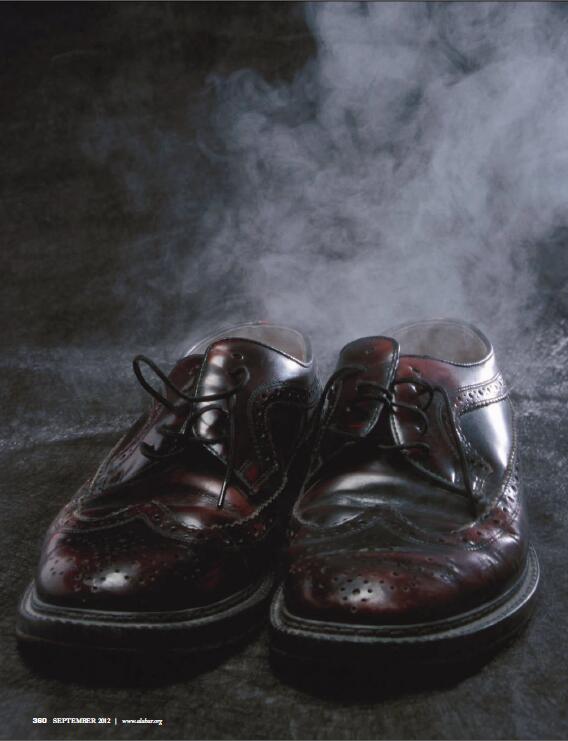The Malignant Mystique of "standing"
| Publication year | 2012 |
| Pages | 0361 |
| Citation | Vol. 73 No. 5 Pg. 0361 |
By Jerome A. Hoffman

I believe we must take care not to convert every failure to state a claim [under Rule 12(b)(6)] into a jurisdictional standing issue-else every time a court addresses the legal issue of whether a plaintiff's theory of relief is cognizable under Alabama law, a jurisdictional issue will be created. . . .
—Murdock, J.
Langham v. Wampol1
Occasionally, a judge-made invention turns cancerous. Certainly "standing" has, at least in Alabama, but probably much more widely. So much so that "standing"-noxiously hybridized with runaway notions about the legitimate domain of Rule 12(b)(1)-threatens to swallow Rule 12(b)(6) whole.
I cherish my grievances with the abracadabra the United States Supreme Court worships as "standing." It comprises nothing not more easily understood under the rubric of Rule 12(b)(6). And it should never have been confounded with the rightful realms of Rule 12(b)(1) and void judgments. A proper understanding of "standing" encompasses the beneficial view that "standing" properly applied may extend a grievant's access to federal judicial relief in public law cases beyond that afforded to one "in the position of a traditional Hohfeldian plaintiff."2 This, of course, also bears discussion most appropriately under Rule 12(b)(6). Let all that rest for now, though.
The grievance I now crave "standing" to assert here is this: Our Alabama state appellate courts have not only adopted the federal language of "standing"-although, with certain possible exceptions,3 it can never bind them-but have catalyzed its spread into parts of the corpus juris where it has no healthy part to play.
The Alabama Supreme Court has arrived at its insidious trap for plaintiffs and their counsel by a two-step process. First, it has confounded standing with subject matter jurisdiction. Second, it has confounded standing with a number of challenges to the merits of a controversy over which trial courts have unquestionably had subject matter jurisdiction. Among these are the Rule 12(b)(6) motion to dismiss on the merits for failure to state a claim upon which relief can be granted, or the Rule 17(a) motion to dismiss or substitute on the ground that the present plaintiff is not the real party in interest. Occasionally, Rule 17(b) and Rule 19(a) have, unfortunately, also been dragged into the mix.
Confounding Standing and Subject Matter Jurisdiction
The most problematic, perhaps, of the cases in point is State v. Property at 2018 Rainbow Drive.4 In that case, six members of the Alabama Supreme Court signed on to an opinion saying, "Because the City had no standing, the trial court had no subject-matter jurisdiction [to entertain a pleading purporting to amend a complaint. A complaint filed by a party without standing cannot relate back to the filing of the original complaint, because there is nothing 'back' to which to relate], and, consequently, [the trial court had] no alternative but to dismiss the action."5
The opinion fails to state enough record facts to determine if even the disposition of the appeal was justified. Everyone agreed that the City had no statutory authorization to bring this forfeiture action. Why the State of Alabama needed to rely upon being brought in by amendment or upon the doctrine of relation back of amendments does not appear in the opinion. What need the opinion's adherents found to equate lack of statutory authorization with lack of "standing" also does not appear. Lack of statutory authorization best supports analysis as the lack of a claim upon which relief can be granted, that is, a claim under Rule 12(b)(6), not a claim over which the forum court lacks subject matter jurisdiction, that is, not a claim under Rule 12(b)(1). To invoke the word "standing," with all of its federal constitutional law baggage, creates the risk that this public law proposition will spread to private law contexts where it never belongs, rendering the filing of ill-conceived but not irredeemable private law complaints not merely mistaken acts, reparable by amendment, but void acts, not reparable by amendment. The proposition is dangerous because, by the same kind of casual thinking, the word "standing" unnecessarily invoked in the proposition can be erroneously equated with "real party in interest" or "failure to state a claim." This simple, though doctrinally unjustified, extension could swallow up Rule 12(b)(6), Rule 17 and the whole law of amendments.
In Nix v. McElrath 6 , as another example, the Alabama Supreme Court said that "standing," like jurisdiction, is necessary for any valid judgment. So must a plaintiff's complaint allege a claim upon which relief can be granted, that is, the plaintiff's complaint must withstand a motion to dismiss under a Rule(b)(6) motion before having any hope of obtaining a valid judgment?
Confounding Standing with a Number of Challenges to the Merits of a Controversy over Which Trial Courts Have Unquestionably Had Subject Matter Jurisdiction
Some Alabama appellate decisions have invoked "standing" where they should have relied upon Rule 12(b)(6). In Carey v. Howard,7 for example, it said: "[S]tanding...
To continue reading
Request your trial
